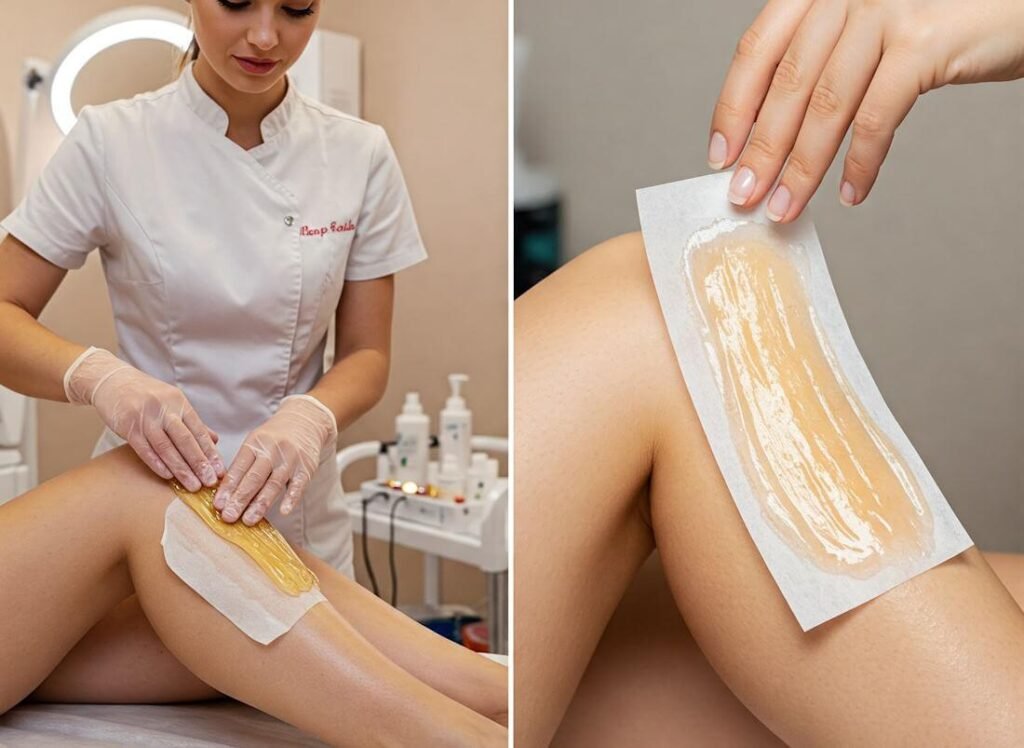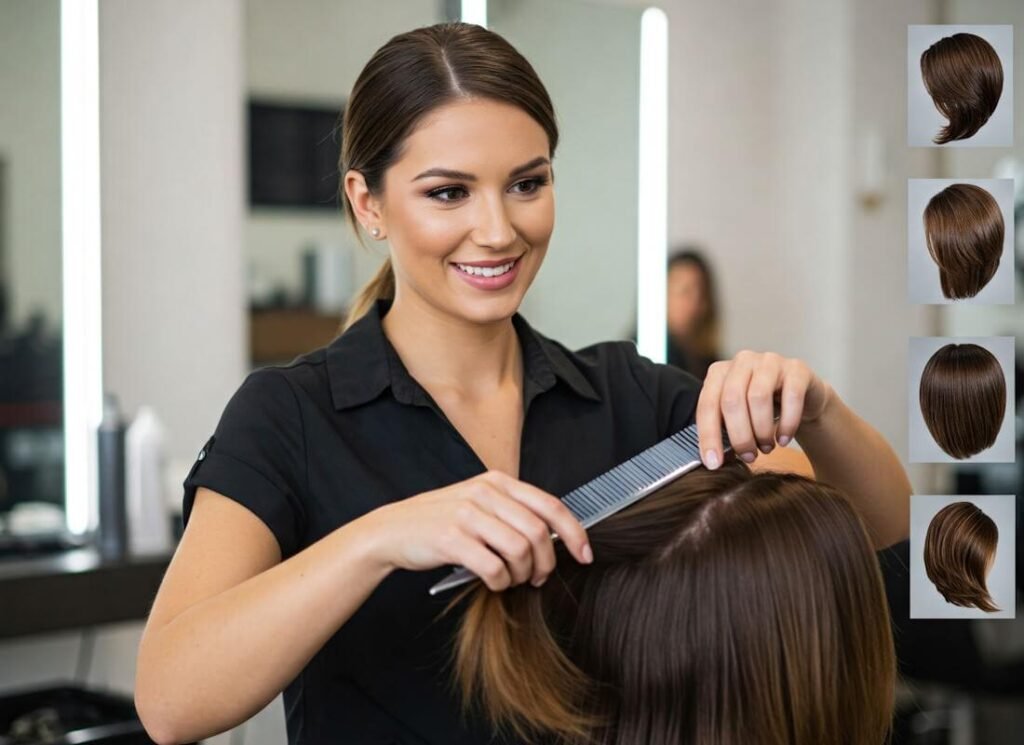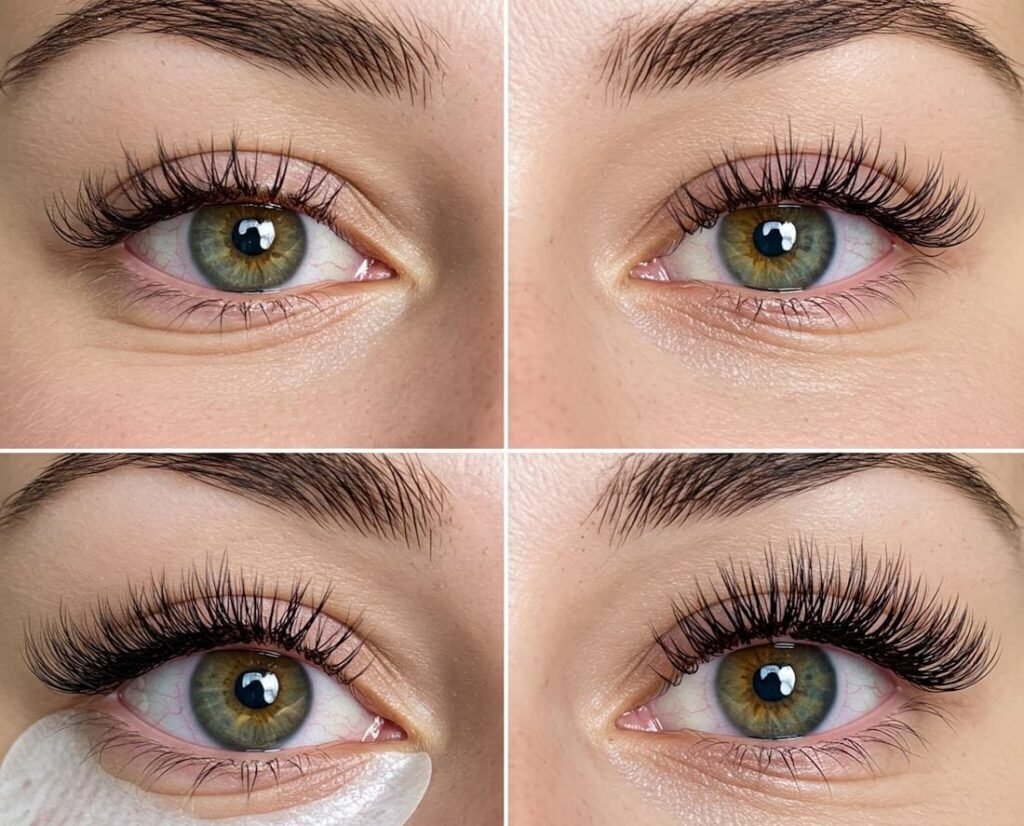Facial treatments are essential components of a comprehensive skincare regimen aimed at promoting healthy skin. These treatments range from basic cleansing and exfoliation to more complex procedures such as chemical peels and microdermabrasion. Each type of facial is tailored to address specific skin concerns, making them valuable for individuals seeking to enhance their skin’s appearance and health.
The foundation of any facial treatment typically involves thorough cleansing to remove impurities and prepare the skin for subsequent therapies. Following cleansing, professionals often utilize exfoliation techniques to remove dead skin cells, which allows for better absorption of nutrients from serums and moisturizers. This preparatory phase is crucial, as it aids in promoting cellular turnover, an important process in maintaining youthful skin.
There are various types of facial treatments available, each designed with particular goals in mind. For instance, hydrating facials focus on replenishing moisture levels in the skin, making them ideal for individuals with dry or dehydrated complexions. On the other hand, anti-aging facials often incorporate ingredients that stimulate collagen production, striving to diminish the appearance of fine lines and wrinkles. Additionally, acne-fighting facials utilize targeted ingredients to regulate sebum production and reduce breakouts, catering to those prone to skin blemishes.
Understanding the significance of regular facials is vital for long-term skin maintenance. These treatments can provide numerous benefits beyond just surface-level improvements; they foster relaxation, reduce stress, and promote overall well-being. Consequently, integrating regular facial treatments into skincare routines can lead to sustained skin health and a radiant complexion. The purpose of facial treatments extends beyond aesthetic enhancement, making them a worthwhile investment in one’s skincare journey.
Understanding Skin Types
Skin is a complex organ that varies significantly among individuals, necessitating customized care. The primary skin types include oily, dry, combination, sensitive, and normal skin. Each of these types has distinct characteristics and requires specific facial treatments to promote optimal skin health.
Oily skin is often characterized by an excess production of sebum, leading to a shiny appearance and a predisposition to acne. Facials designed for oily skin typically focus on deep cleansing to remove excess oil and unclog pores. Ingredients such as salicylic acid and charcoal are commonly used to balance oil production and prevent breakouts.
Dry skin, in contrast, lacks moisture and may show signs of flakiness or tightness. Facials aimed at dry skin emphasize hydration, utilizing ingredients like hyaluronic acid and glycerin to replenish moisture levels. Regular facial treatments can help soothe dryness and improve the skin’s barrier function, leading to a more hydrated and healthy complexion.
Combination skin presents as a mix of oily and dry areas, often featuring an oily T-zone with dry patches elsewhere. Tailored facials that address both concerns are crucial for maintaining balance in this skin type. Such treatments might include targeted exfoliation in oily areas while providing hydration to drier zones.
Sensitive skin is prone to reactions and requires gentle care. Facials formulated for sensitive skin must include soothing ingredients like aloe vera or chamomile to mitigate irritation and promote calmness. Identifying sensitive skin is vital, as harsh products can exacerbate issues.
Finally, normal skin is balanced, neither too dry nor overly oily. While it may require less specific attention compared to other types, regular facials can maintain its health and prevent potential issues. Understanding one’s skin type is therefore essential in choosing appropriate facial treatments that support skin health effectively.
The Role of Exfoliation in Facial Treatments
Exfoliation plays a pivotal role in maintaining healthy skin, making it a fundamental component of regular facial treatments. During exfoliation, dead skin cells are effectively removed from the skin’s surface, which is crucial as an accumulation of these cells can lead to a dull complexion and clogged pores. By incorporating professional exfoliation into facial treatments, individuals can stimulate cell turnover, revealing a fresher and more vibrant layer of skin beneath.
One of the primary benefits of professional exfoliation is its ability to enhance the skin’s appearance and texture significantly. Unlike at-home methods, which can vary in effectiveness depending on the products used and techniques applied, professional treatments utilize advanced techniques and formulations. These can include chemical peels or microdermabrasion, which deeply penetrate the skin and provide a more profound exfoliation effect. Such treatments not only improve the skin’s appearance but also facilitate better absorption of subsequent skincare products, thereby optimizing their efficacy.
However, it is important to recognize that at-home exfoliation methods also serve valuable purposes. Gentle exfoliants, such as scrubs and chemical exfoliants like glycolic acid or salicylic acid, can assist in maintaining skin clarity and smoothness between professional facial appointments. Regular at-home exfoliation promotes a healthy skin cycle and can prevent the buildup of dead skin, minimizing issues such as acne or uneven skin tone. Nevertheless, individuals should approach at-home methods with caution, ensuring they select appropriate products that complement their skin types to avoid irritation or damage.
In summary, both professional and at-home exfoliation contribute significantly to skin health. Regular facials that include professional exfoliation provide deep cleansing and rejuvenation, while self-exfoliation techniques help maintain results. Together, they create a cohesive strategy for healthier, radiant skin.
Deep Cleansing: A Key Benefit
A regular facial treatment offers a profound cleansing experience that surpasses the effects of conventional skincare routines. The primary focus of facials is to deliver an in-depth clean to the skin, which is pivotal for maintaining healthy, radiant skin. During a facial, trained estheticians employ specialized techniques and high-quality products that are designed to effectively unclog pores, remove impurities, and enhance overall skin health. This deep cleansing process mitigates the risk of acne breakouts, which are often caused by clogged pores filled with excess oil and dead skin cells.
The first step of a facial typically involves a thorough cleansing to prepare the skin. This is followed by exfoliation, which helps to slough off the outer layer of dead skin cells. Exfoliation promotes cell turnover and reveals fresh, youthful skin beneath, while also preventing the buildup that can lead to blackheads and blemishes. After exfoliation, steam is often applied to the face, which serves to open up the pores. This is a critical aspect of the facial, as it allows for more effective extraction of impurities. Estheticians use gentle extraction methods to remove any blockages without causing irritation to the skin.
Furthermore, facials often include the application of deep-cleansing masks that target specific skin concerns. Ingredients such as clay and charcoal are commonly used for their ability to draw out toxins and excess oil, further contributing to cleaner pores. Regular facials not only help in removing impurities but also prepare the skin to better absorb serums and moisturizers, enhancing their effectiveness. Thus, the deep cleansing associated with facials plays a crucial role in promoting overall skin health and vitality, making them an essential component of a comprehensive skincare regimen.
Hydration and Nourishment for the Skin
Regular facials play a crucial role in maintaining healthy skin by providing essential hydration and nourishment. The skin, being the body’s largest organ, requires adequate moisture and nutrients to function optimally and to appear vibrant. During a facial treatment, a combination of masks, serums, and moisturizers are utilized to address various skin needs, effectively restoring vitality and radiance.
Facial masks are tailored formulations designed to target specific skin concerns, such as dryness, dullness, or uneven texture. These masks are often enriched with hydrating ingredients like hyaluronic acid, glycerin, and aloe vera, which work synergistically to replenish moisture. The application of a mask allows these nourishing elements to penetrate deeper into the skin, resulting in improved hydration levels that can last well beyond the treatment itself.
In addition to masks, serums offer concentrated doses of active ingredients that promote skin health. Depending on their formulation, serums can provide numerous benefits, including enhancing elasticity, combating signs of aging, and brightening the complexion. By including serums in a facial routine, the skin receives targeted nourishment that facilitates cell turnover and encourages collagen production, essential factors in maintaining youthful and healthy skin.
Moisturizers play a fundamental role in locking in the hydration attained during a facial treatment. Formulated with various emollients and occlusives, these products create a barrier that prevents water loss and keeps the skin supple. Properly hydrating the skin not only mitigates dryness but also enhances its appearance, leaving it looking more radiant and plump.
The cumulative effect of these elements in regular facials underscores their importance in skincare regimens. By investing time in these treatments, individuals can ensure their skin remains nourished and hydrated, contributing significantly to its overall health and well-being.
Anti-Aging Benefits of Regular Facials
Regular facials offer a myriad of anti-aging benefits that contribute significantly to maintaining youthful skin. One of the primary advantages is the stimulation of collagen production. Collagen, a protein vital for skin elasticity and firmness, decreases with age. Various facial treatments, including microdermabrasion and chemical peels, are specifically designed to enhance skin texture and promote the generation of this essential protein. By incorporating these procedures into a skincare regimen, individuals can effectively combat signs of aging such as sagging skin.
Improving skin elasticity is another significant benefit of regular facials. As the skin loses its natural elasticity over time, it becomes more susceptible to wrinkles and fine lines. Facials that involve deep cleansing and the application of hydrating masks are particularly effective in enhancing the skin’s resilience. Ingredients like hyaluronic acid and peptides are often utilized in these treatments to nourish the skin and help restore its youthful bounce. When the skin is adequately hydrated and nourished, the overall appearance becomes more vibrant, thereby minimizing the visibility of aging.
Reducing the appearance of fine lines and wrinkles is a key focus of anti-aging facials. Many targeted treatments incorporate powerful serums enriched with antioxidants that combat free radicals, which contribute to skin aging. Regular facial sessions can lead to a smoother complexion over time, as these products work to diminish the visibility of imperfections. Treatments such as LED therapy and radiofrequency facials have also gained popularity for their ability to tighten the skin effectively, providing a non-invasive method to address aging concerns.
Incorporating regular facials into a skincare routine can thus yield significant anti-aging benefits, fostering a rejuvenated appearance. By promoting collagen production, improving elasticity, and reducing the visibility of fine lines, these treatments serve as a crucial component of proactive skincare. Ultimately, they contribute to a healthier, more radiant complexion that defies the effects of aging.
Stress Relief and Its Impact on Skin Health
Facials are not merely luxurious treatments; they serve as an effective avenue for stress relief that has significant benefits for skin health. As modern life becomes increasingly hectic, stress levels tend to rise, which directly impacts the well-being of our skin. Stress triggers several physiological responses in the body, such as increased cortisol production, which can lead to a variety of skin problems, including acne, eczema, and premature aging. Thus, integrating regular facial treatments into one’s skincare routine can help mitigate these adverse effects.
The process of receiving a facial inherently promotes relaxation. Many facial treatments involve techniques such as gentle massage, soothing masks, and careful extraction of impurities, all of which stimulate circulation and allow the individual to unwind. This relaxation response not only reduces immediate stress levels but also aids in long-term emotional well-being. As the body relaxes, there is a decrease in the stress hormones circulating in the system, enabling the skin to commence its healing properties unhindered.
Furthermore, specific ingredients commonly used in facials, such as botanical extracts and essential oils, possess calming properties that enhance the relaxation experience. For instance, chamomile and lavender can soothe both the mind and the skin, allowing for a harmonized balance. The enhanced blood flow resulting from facial treatments provides essential nutrients to skin cells, promoting a healthier complexion and combating issues like dryness and inflammation that often arise from stress.
While it may be easy to overlook the relationship between stress and skin health, the evidence is quite compelling. Incorporating regular facials not only addresses immediate aesthetic concerns but also serves as a proactive measure in managing stress, leading to improved skin vitality and overall well-being. By prioritizing a skincare routine that embraces relaxation, individuals can foster healthier skin while simultaneously reducing the burden of stress in their lives.
Choosing the Right Facial Treatment for Your Needs
Selecting an appropriate facial treatment is crucial to achieving desired skin health and appearance. Individual skin concerns vary widely, and aligning a facial with specific needs can enhance overall effectiveness. Begin by assessing your skin type, which can range from oily to dry, or sensitive to combination. Understanding these characteristics serves as a foundation for selecting a suitable facial.
Next, consider any particular skin concerns you may have, such as acne, signs of aging, hyperpigmentation, or dehydration. For instance, if you’re battling acne, opt for treatments that include exfoliation and deep cleansing. Facials incorporating ingredients like salicylic acid or glycolic acid can effectively address excess oil and unclog pores. Conversely, those looking to reduce fine lines and restore firmness may benefit from anti-aging facials featuring retinol or collagen-boosting agents.
Your desired outcomes should also guide your choice. If relaxation and stress relief are your primary goals, a soothing facial with calming botanicals might be ideal. Alternatively, if you seek immediate radiance for an event, a glow-enhancing facial with brightening elements, such as vitamin C, can be beneficial.
It is highly recommended to engage in consultations with skincare professionals. These experts can assess your specific needs and propose tailored treatments based on skin evaluations. A licensed esthetician can help identify which products and techniques will yield the best results for your skin. Additionally, discussing any allergies or sensitivities is essential in avoiding adverse reactions during treatment.
In summary, choosing the right facial treatment involves understanding your skin type, identifying specific skin concerns, aligning with desired outcomes, and consulting with skincare professionals to ensure a personalized approach. By taking these steps, one can achieve a more effective and satisfying facial experience, resulting in healthier skin over time.
Conclusion: Cultivating Healthy Skin Through Regular Facials
Regular facials are an integral component of a comprehensive skincare regime, significantly contributing to overall skin health. By committing to consistent facial treatments, individuals can revitalize their skin, addressing various issues such as dryness, excess oil, and signs of aging. These professional treatments not only cleanse and exfoliate but also enhance hydration levels and promote circulation, paving the way for a more radiant complexion.
Facials utilize a wide array of techniques and products tailored to meet diverse skin needs, establishing a personalized approach that is often difficult to replicate at home. Whether through deep cleansing, chemical peels, or hydration masks, facials provide deeper penetration of active ingredients, which can amplify the skin’s rejuvenation process. This level of care ensures that skin not only appears healthier but also functions optimally by removing impurities and toxins.
Moreover, regular facials are instrumental in preventing many skin conditions. By maintaining a diligent skincare routine that includes these professional treatments, one can avoid common challenges such as acne breakouts or premature aging. The attentive exfoliation and moisturizing benefits facilitate the maintenance of a balanced skin environment, minimizing the risk of various dermatological issues.
Additionally, the relaxation associated with facial treatments should not be overlooked. With modern lifestyles being increasingly stressful, taking the time to indulge in a facial can offer significant mental and emotional benefits alongside the physical ones. Prioritizing self-care through regular facials does not only reflect a commitment to skin health but also serves as a vital ritual for personal well-being. Thus, embracing the practice of regular facials is a rewarding investment in both the appearance and health of one’s skin.





